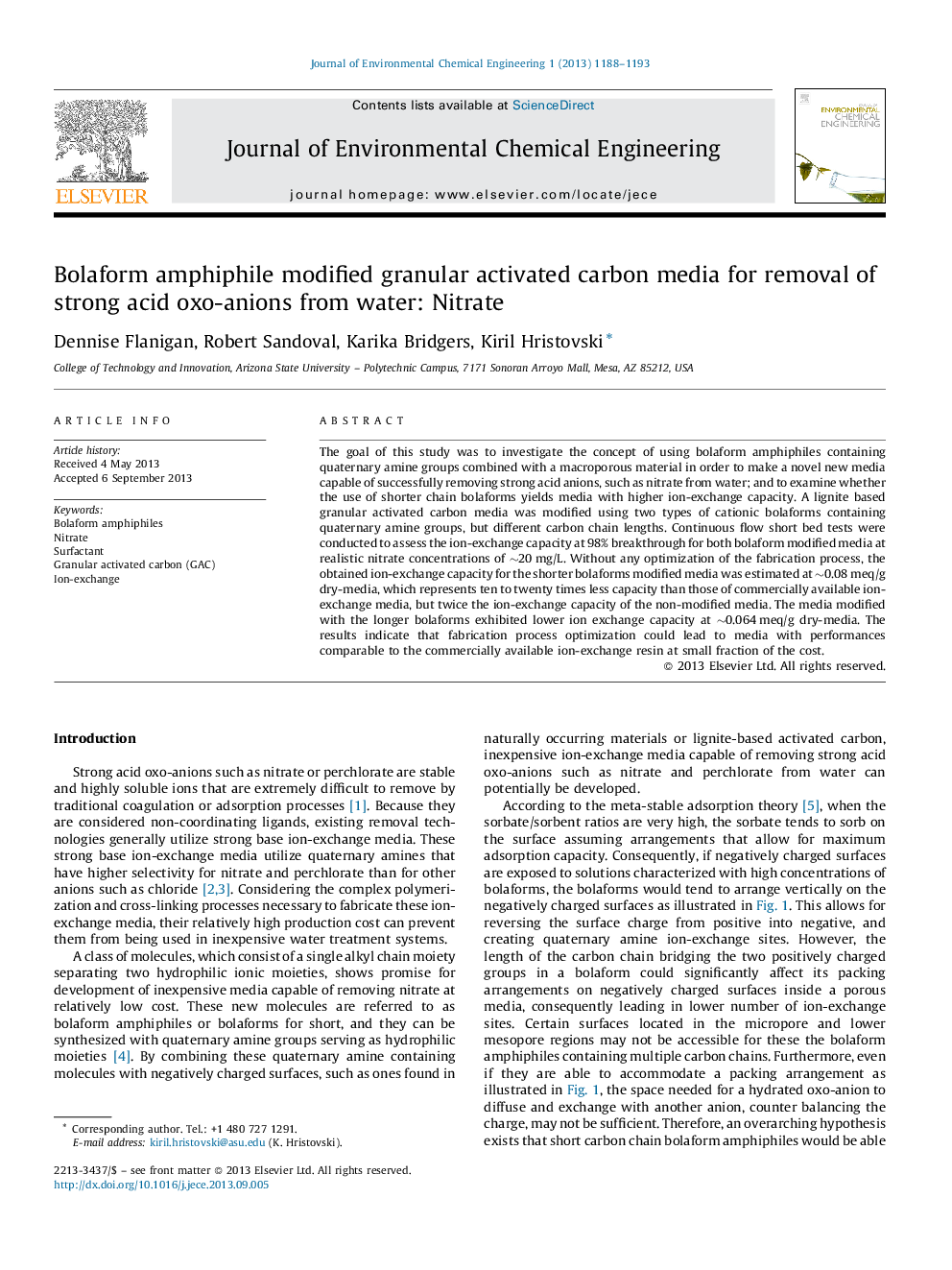| Article ID | Journal | Published Year | Pages | File Type |
|---|---|---|---|---|
| 222519 | Journal of Environmental Chemical Engineering | 2013 | 6 Pages |
The goal of this study was to investigate the concept of using bolaform amphiphiles containing quaternary amine groups combined with a macroporous material in order to make a novel new media capable of successfully removing strong acid anions, such as nitrate from water; and to examine whether the use of shorter chain bolaforms yields media with higher ion-exchange capacity. A lignite based granular activated carbon media was modified using two types of cationic bolaforms containing quaternary amine groups, but different carbon chain lengths. Continuous flow short bed tests were conducted to assess the ion-exchange capacity at 98% breakthrough for both bolaform modified media at realistic nitrate concentrations of ∼20 mg/L. Without any optimization of the fabrication process, the obtained ion-exchange capacity for the shorter bolaforms modified media was estimated at ∼0.08 meq/g dry-media, which represents ten to twenty times less capacity than those of commercially available ion-exchange media, but twice the ion-exchange capacity of the non-modified media. The media modified with the longer bolaforms exhibited lower ion exchange capacity at ∼0.064 meq/g dry-media. The results indicate that fabrication process optimization could lead to media with performances comparable to the commercially available ion-exchange resin at small fraction of the cost.
